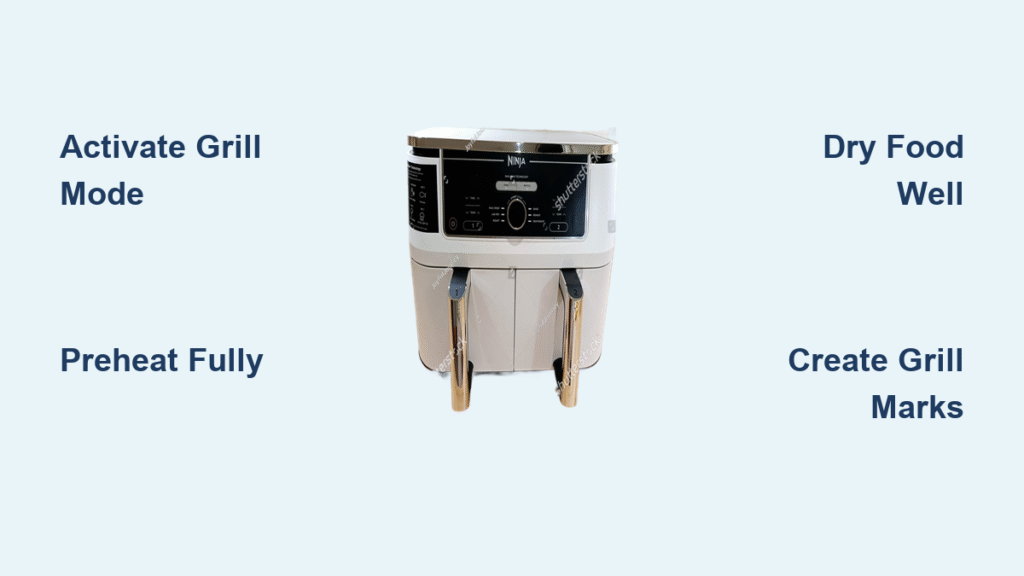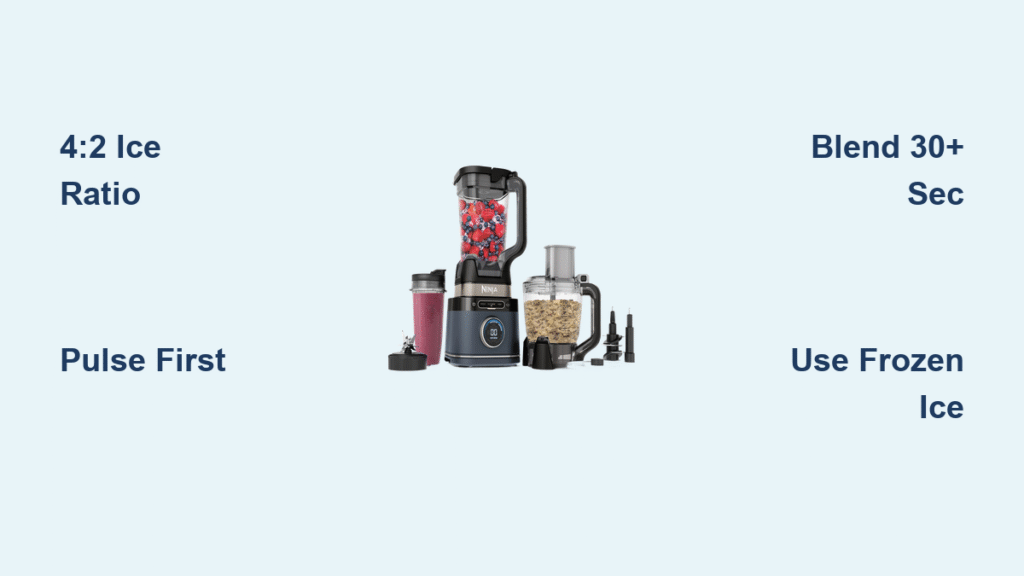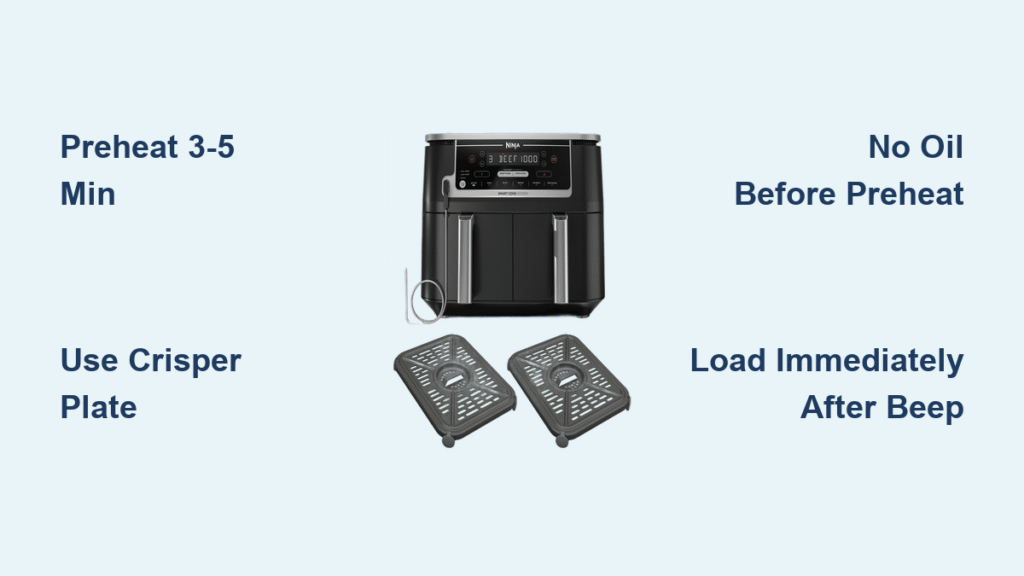That sizzle when steak hits a hot pan? That deep brown crust packed with savory complexity? Your Ninja Foodi’s Sear/Stovetop function delivers this professional cooking technique right on your countertop. Forget transferring between appliances—this feature transforms your cooking pot into a high-heat powerhouse that locks in juices and builds foundational flavors for everything from weekday beef stew to weekend pot roast. By the time you finish this guide, you’ll know exactly how to activate, optimize, and transition from searing to slow cooking like a seasoned chef.
The magic happens through the Maillard reaction—a chemical process that occurs at high temperatures (around 300°F+), creating hundreds of new flavor compounds. Unlike pressure cooking alone, searing first develops rich umami notes that infuse your entire dish. And with the Ninja Foodi, you skip the extra skillet cleanup while achieving results that rival restaurant kitchens. Let’s unlock this game-changing function step by step.
Activate Sear Function Without Mistakes
Press the Sear/Stovetop button once—no complicated menu diving. Your Ninja Foodi instantly begins heating the cooking pot to 400°F+, reaching optimal searing temperature in just 2-3 minutes. Watch for the visual cue: a drop of water should skitter and evaporate immediately upon contact. Never add oil to a cold pot; the high-heat cycle requires the ceramic-coated surface to be fully heated first to prevent sticking and ensure even browning.
Pro tip: Place your hand 6 inches above the pot opening—when you feel intense radiant heat, it’s sear-ready. This eliminates guesswork while preventing underheated oil that steams instead of sears.
Choose the Right Oil for Maximum Results
Your oil’s smoke point determines whether you get golden crust or acrid smoke. Stick strictly to these Ninja Foodi-approved options:
- Avocado oil (520°F): Best for beef or pork—neutral taste won’t overpower
- Refined olive oil (465°F): Ideal for poultry—adds subtle fruitiness
- Grapeseed oil (420°F): Perfect for delicate fish—light and clean
Pour 2-3 tablespoons into the preheated pot, then tilt to coat the entire cooking surface. The oil should shimmer but not smoke—if wisps appear, reduce heat slightly using the +/- buttons. Never use extra virgin olive oil or butter; their low smoke points guarantee burnt flavors.
Perfect Searing Technique for Proteins

Beef Searing for Stews and Pot Roast
- Pat chuck roast chunks bone-dry with paper towels—moisture is the enemy of browning
- Season aggressively with coarse salt and black pepper
- Place meat in a single layer with 1-inch gaps between pieces
- Sear 2 minutes per side until deep mahogany crust forms
- Flip with tongs—never pierce with a fork to retain juices
Chicken Thigh Searing Protocol
- Start skin-side down for 3 minutes until crackling and golden
- Flip and sear meat-side for 90 seconds
- Remove immediately when fond (browned bits) releases easily
- Rest on a wire rack—don’t stack pieces to prevent steaming
Critical warning: Overcrowding drops pot temperature by 100°F+, turning searing into steaming. Cook in batches if needed—your patience pays off in flavor.
Build Flavor Bases with Vegetables
After removing proteins, leverage the rendered fat for vegetable sautéing. Add 1 diced onion and cook for 4 minutes until translucent, scraping the pot bottom to incorporate fond. Toss in 2 minced garlic cloves during the final 60 seconds—any longer and they’ll burn at this heat. For classic mirepoix, add 1 cup diced carrots and celery after onions, stirring until edges caramelize (about 3 minutes). This layering technique captures every flavor molecule from your seared meat.
Execute Flawless Deglazing Every Time
This non-negotiable step transforms stuck-on fond into liquid gold. Immediately after vegetables soften:
- Pour ½ cup deglazing liquid (beef broth for stews, red wine for roasts)
- Scrape vigorously with a wooden spoon in circular motions
- Simmer 90 seconds until liquid reduces by one-third
- Stop when fond dissolves completely—no scraping sounds remain
Pro tip: For deeper flavor, add 1 tablespoon tomato paste during the last minute of vegetable sautéing, cooking until it darkens slightly before deglazing.
Transition Seamlessly to Slow Cooking
With deglazing complete, follow this precise sequence:
1. Return all seared proteins to the pot
2. Add remaining ingredients (potatoes, herbs, etc.)
3. Press Slow Cook → Low → Set timer for 6-8 hours
4. Secure the pressure lid for steam retention
The Ninja Foodi automatically adjusts from high-heat searing to gentle slow cooking—no temperature spikes or texture damage. Your beef will shred effortlessly after 8 hours, infused with every flavor developed during searing.
Avoid These Costly Searing Errors
Moving meat too soon: If proteins stick when nudged, they’re still bonding with the pot. Wait until they release naturally (about 2 minutes).
Wrong oil quantity: Less than 2 tablespoons causes uneven browning; more than 3 creates excessive splatter. Measure precisely.
Skipping deglazing: Those browned bits contain 30% of your dish’s final flavor—never discard them.
Over-searing: Beyond 3 minutes per side, proteins develop a bitter, carbonized crust. Set a timer.
Simplify Post-Searing Cleanup
Let the pot cool completely before cleaning—sudden temperature changes damage the ceramic coating. Fill with warm, soapy water and soak for 10 minutes. Use a nylon scrubber (never steel wool) to lift residue, focusing on the pot’s curved bottom where fond accumulates. Rinse thoroughly and dry upright—moisture trapped under the base can damage heating elements.
Real-World Timing for Popular Dishes
Beef Stew Foundation:
– Sear 2 lbs chuck roast: 10 minutes (2 batches)
– Sauté mirepoix: 5 minutes
– Deglaze and assemble: 3 minutes
– Total active time: 18 minutes
Pork Shoulder Carnitas:
– Sear pork cubes: 8 minutes
– Caramelize onions: 4 minutes
– Deglaze with orange juice: 2 minutes
– Total active time: 14 minutes
Non-Negotiable Safety Protocols
- Use silicone utensils only: Metal tongs can scratch the coating at high heat
- Engage range hood: Searing produces smoke—ventilate aggressively
- Keep lid nearby: Slide it partially over the pot during initial oil heating to control splatter
- Never walk away: Unattended searing risks smoke alarms or fire
Advanced Techniques for Flavor Mastery

Reverse Sear for Thick Cuts
For 2-inch steaks or pork loin:
1. Slow cook first at 200°F until 120°F internal temp
2. Switch to Sear function
3. Sear 60 seconds per side for crust
4. Rest 10 minutes before slicing
Layered Flavor Building
Create restaurant-depth in 3 stages:
1. Sear meat → remove
2. Sear mushrooms in fond until golden
3. Sear 2 tbsp tomato paste for 90 seconds
4. Deglaze with red wine
Maximize Fond for Restaurant-Quality Results
That caramelized residue on your pot bottom? It’s concentrated flavor waiting to dissolve into your sauce. During slow cooking, fond breaks down into:
– Natural thickeners from meat proteins
– Umami bombs from Maillard reaction compounds
– Rich color without artificial additives
Pro tip: After deglazing, simmer liquid 2 minutes longer before adding other ingredients—this concentrates flavors by 15%.
Maintain Peak Searing Performance
Extend your Ninja Foodi’s lifespan with these habits:
– Hand-wash only: Dishwashers degrade the ceramic coating
– Inspect before each use: Replace pots with visible scratches
– Preheat empty: Always heat the pot before adding oil
– Store properly: Keep pot inverted to prevent moisture buildup
Mastering the sear function transforms your Ninja Foodi from a convenient appliance into a flavor laboratory. That initial sizzle isn’t just sound—it’s the foundation of every complex note in your finished dish. Start with a simple beef stew this weekend, focusing on perfecting that crust and deglazing ritual. Within two uses, you’ll notice deeper colors, richer aromas, and textures that make store-bought broth taste one-dimensional. Remember: great slow-cooked meals aren’t born in the “low and slow” phase—they’re forged in those critical first minutes of high-heat searing. Your countertop powerhouse is ready; now go make those browned bits work for you.





